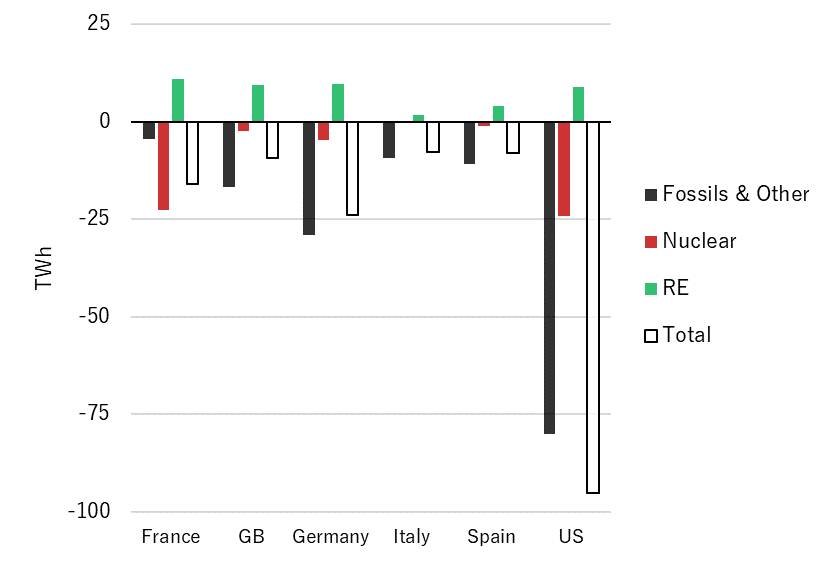Increased demand for electricity is best met by investing in renewable electricity. Costs are the lowest and, just as important, economic risks are the lowest as well. So, whenever new capacity is needed in open competitive markets renewable electricity will increase.
When demand falls, as it has during the Covid-19 pandemic due to measures taken to reduce the spreading of the virus, it is the fuel-based power generation that is economically hit. Falling demand results in lower prices in competitive markets. Falling prices affects all producers’ margins. But those who really suffer are the owners of power plants that have marginal costs so high that they cannot produce electricity at all.
They lose all income, demonstrating the high risk of investing in fuel-based electricity generation. In some cases, the plants will be permanently closed as a result.
Below is a new compilation of electricity generation in the first five months of 2020 compared to the same period in 2019 for some major European countries and the United States. The pattern is the same for all: Fossil fuel-based electricity has fallen. Nuclear power generation has also fallen. Confirming that they have been outcompeted at low prices.
Europe and United States Change in Electricity Generation 2020-2019 January-May

Renewable power generation in all cases has increased. That increase, despite low prices, is the result of increased capacity created by investments completed or under way when prices fell.
This is what we may expect in the future as well: high prices result in more renewable power. Low prices in less fossil and nuclear power.






